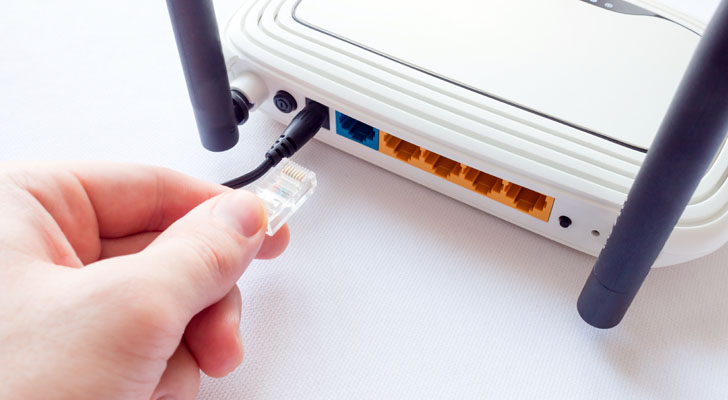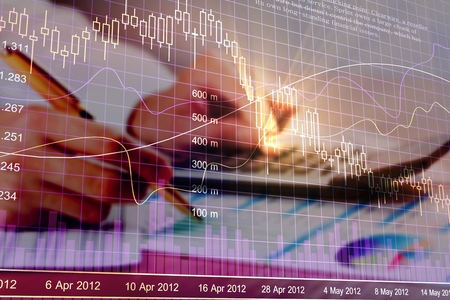February was a crazy month for investors; consequently, the landscape of best-performing exchange-traded funds expanded from primarily biotech and emerging-market ETFs in January to several other spaces for this edition of the best ETFs of the month.
In February, the fortitude of those with generally bullish outlooks was tested as the Dow Jones Industrial Average made historic 1,000-plus point drops twice in less than two weeks. Meanwhile, the S&P 500 is down more than 4% on the month.
The turmoil is mostly attributed to anticipation of a rise in interest rates based on expectations of inflation in the months ahead. But outside of these struggles, some ETFs still managed to maintain impressive performances, while others managed to step up and replace old champions.
In no particular order, here are the best ETFs of February, excluding leveraged funds and exchange-traded notes.
Best ETFs of February: ProShares Long Online/Short Stores ETF (CLIX)

Expense Ratio: 0.65%
YTD Performance: 18% vs 2% for the S&P 500
Among the best ETFs of February were several retail-based ETFs. Notably, the ProShares Long Online/Short Stores ETF (NYSEARCA:CLIX) manged to stand out from the crowd, as it has significantly outperformed the S&P 500 in 2018 so far.
This recently founded ProShares ETF is distinct in that it has a multifaceted strategy that aims to take full advantage of the death of traditional retail while also focusing on the rise of internet retailers. The CLIX achieves this by shorting traditional retail stocks and simultaneously holding online retailers with significant growth. As such, its holdings are constantly varying.
In simplest terms, the long/short approach of this ETF means investors “benefit from both outperforming online and underperforming physical retailers.”
Best ETFs of February: Loncar Cancer Immunotherapy ETF (CNCR)

Expense Ratio: 0.79%
YTD Performance: 23%
Last month, the Loncar Cancer Immunotherapy ETF (NASDAQ:CNCR) made it on the list of best-performing ETFs and it continued its success in February with an impressive 20% advantage over the S&P.
For those who are unfamiliar with CNCR, it’s a biotech ETF that emphasizes companies that are involved with cancer research and treatment.
More specifically, CNCR’s holdings must have cancer immunotherapy drugs that are approved by the FDA or EMA, are in human testing stages, are about to enter human testing stages and/or are involved with other companies that focus on immunotherapy. This includes companies like Aduro BioTech Inc (NASDAQ:ADRO) and AstraZeneca plc (ADR) (NYSE:AZN), which are among its top 10 holdings.
Best ETFs of February: Franklin FTSE Brazil ETF (FLBR)

Expense Ratio: 0.19%
YTD Performance: 14%
Although some new names made the list of best ETFs of February, Brazilian emerging market ETFs like Franklin FTSE Brazil ETF (NYSEARCA:FLBR) still performed exceptionally well this month.
The FLBR follows the FTSE Brazil Capped Index, which emphasizes the most notable large- and mid-cap companies in the country. Although investing in emerging markets like Brazil carries significant risks, top holdings like iron producer Vale SA (ADR) (NYSE:VALE) and brewing company Ambev SA (ADR) (NYSE:ABEV) give investors access to tons of growth potential in a less familiar marketplace.
Best ETFs of February: Global X Social Media ETF (SOCL)

Expense Ratio: 0.65%
YTD Performance: 12%
Global X Social Media ETF (NASDAQ:SOCL) does exactly as its name suggests — it gives investors exposure to social media companies from across the world. As such, it isn’t your run-of-the-mill tech ETF. And the fact that it has outpaced the S&P 500 places it among the best ETFs of 2018 so far.
The SOCL ETF does hold U.S. social media names like Twitter Inc (NYSE:TWTR) and Snap Inc(NYSE:SNAP), but it also holds international social media stocks like Russian internet technology company Yandex NV (NASDAQ:YNDX) and Chinese internet-based holding company Tencent Holdings Ltd (OTCMKTS:TCEHY).
Best ETFs of February: iShares MSCI Brazil Capped ETF (EWZ)

Expense Ratio: 0.62%
YTD Performance: 14%
As with last month, another Brazilian-based ETF — iShares MSCI Brazil Index (ETF)(NYSEARCA:EWZ) — managed to out-do the competition and it remains one of the best ETFs of 2018 so far.
This ETF isn’t significantly different from the FLBR, but as emphasized on last month’s list, EWZ is more focused — it has less holdings — and it has a significantly longer track record of success than relative newcomer FLBR. However, depending on how you look at it, the FLBR could have the upper hand since it has a lower expense ratio at 0.19% compared to the EWZ’s 0.62%.
Ultimately, whichever ETF you focus on, Brazil remains one of the hottest emerging markets out there, and both funds have demonstrated significant staying power in 2018.
Best ETFs of February: Amplify Online Retail ETF (IBUY)

Expense Ratio: 0.65%
YTD Performance: 13%
The Amplify Online Retail ETF (NASDAQ:IBUY) is another retail ETF that has managed to beat the competition at the start of the year and become one of the best-performing ETFs.
Unlike the CLIX, the IBUY does not feature a short/long approach; however, it distinguishes itself by focusing on both traditional retail names that are converting to a primarily online format and online e-tailers that should experience significant growth in the years ahead. This gives investors a basket of stocks with known-name brands like Lands’ End, Inc. (NASDAQ:LE) and online up-and-comer Shutterfly, Inc. (NASDAQ:SFLY).
Best ETFs of February: PowerShares NASDAQ Internet ETF (PNQI)

Expense Ratio: 0.6%
YTD Performance: 15%
Although many biotech ETFs were among the best performing last month, many tech/internet-based ETFs have manged to hold strong through February’s volatility. The PowerShares Exchange-Traded Fund Trust (NASDAQ:PNQI) is no exception, as it has out-paced the S&P 500 by more that 12%.
The PNQI tracks the NASDAQ Internet Index, which contains the “largest and most liquid U.S.-listed companies engaged in internet-related businesses.” In plain English, that means the ETF contains major tech names like Netflix, Inc. (NASDAQ:NFLX), Amazon and Chinese internet search provider Baidu Inc (ADR) (NASDAQ:BIDU).
It might not have countless obscure tech names with mega-ton growth potential, but it does contain many of the top players with more than 90% of its holdings allocated to mostly large-cap stocks that focus on internet software & services and internet & direct marketing retail. This makes it a fairly reliable fund for those who have faith in the consistently strong tech space.
Best ETFs of February: iShares MSCI Russia Capped ETF (ERUS)

Expense Ratio: 0.62%
YTD Performance: 13%
Although it didn’t make an appearance on last month’s list, Russia was a notable emerging market in February, as seen in the standout performance in the iShares MSCI iShares MSCI Russia ETF (NYSEARCA:ERUS).
While U.S. stocks were generally struggling to hold their ground, the ERUS manged to gain a 12% lead over the S&P. As with all emerging markets, there is tons of growth potential packed in, but with that comes significant risk. But investors who are willing to look past these risks (as well as the “us versus them” political landscape), might find what they’re looking for in this fund.
The ERUS tracks a wide variety of Russian stocks like financial Sberbank of Russia(OTCMKTS:AKSJF) and gas pipeline operator Gazprom PAO (ADR) (OTCMKTS:OGZPY), most of which are likely unfamiliar to U.S.-based investors.
Best ETFs of February: iShares Latin America 40 ETF (ILF)

Expense Ratio: 0.49%
YTD Performance: 12%
As mentioned earlier, several emerging-market ETFs retained their spot on the list of best ETFs for the month, and that includes the iShares S&P Latin America 40 Index (ETF)(NYSEARCA:ILF).
Although several of the ETFs on this list emphasize Brazil, the ILF will be appealing to those looking for generalized exposure to the best that the Latin American marketplace has to offer. There’s still an impressive allocation to Brazilian stocks with this ETF (60%), but other Latin American countries — Mexico (23%) and Chile (12%) — have a significant presence.
As such, its top holdings include companies like Brazilian energy play Petroleo Brasileiro SA Petrobras (ADR) (NYSE:PBR), telcom America Movil SAB de CV (ADR) (NYSE:AMX) and Mexican holding company Fomento Economico Mexicano SAB (ADR) (NYSE:FMX).
Best ETFs of February: KraneShares CSI China Internet ETF (KWEB)

Expense Ratio: 0.72%
YTD Performance: 9%
The KraneShares CSI China Internet ETF (NYSEARCA:KWEB) embodies a combination of two trends that the best ETFs of the month followed: it’s an emerging-market ETF with an emphasis on internet-based companies.
Specifically, the KWEB focuses on “China-based companies whose primary business or businesses are in the internet and internet-related sectors.” What that all boils down to is a large sector breakdown in tech (60%) and consumer discretionary (37%) stocks, with the remainder allocated to industrial companies (2.5%).
The fund’s heavy emphasis on Chinese large-cap (55.7%) and mid-cap (35.4%) companies leads to top holdings like the “Chinese Amazon” Alibaba Group Holding Ltd (NYSE:BABA), JD.Com Inc(ADR) (NASDAQ:JD) and Weibo Corp (ADR) (NASDAQ:WB).
Source: Investors Place
